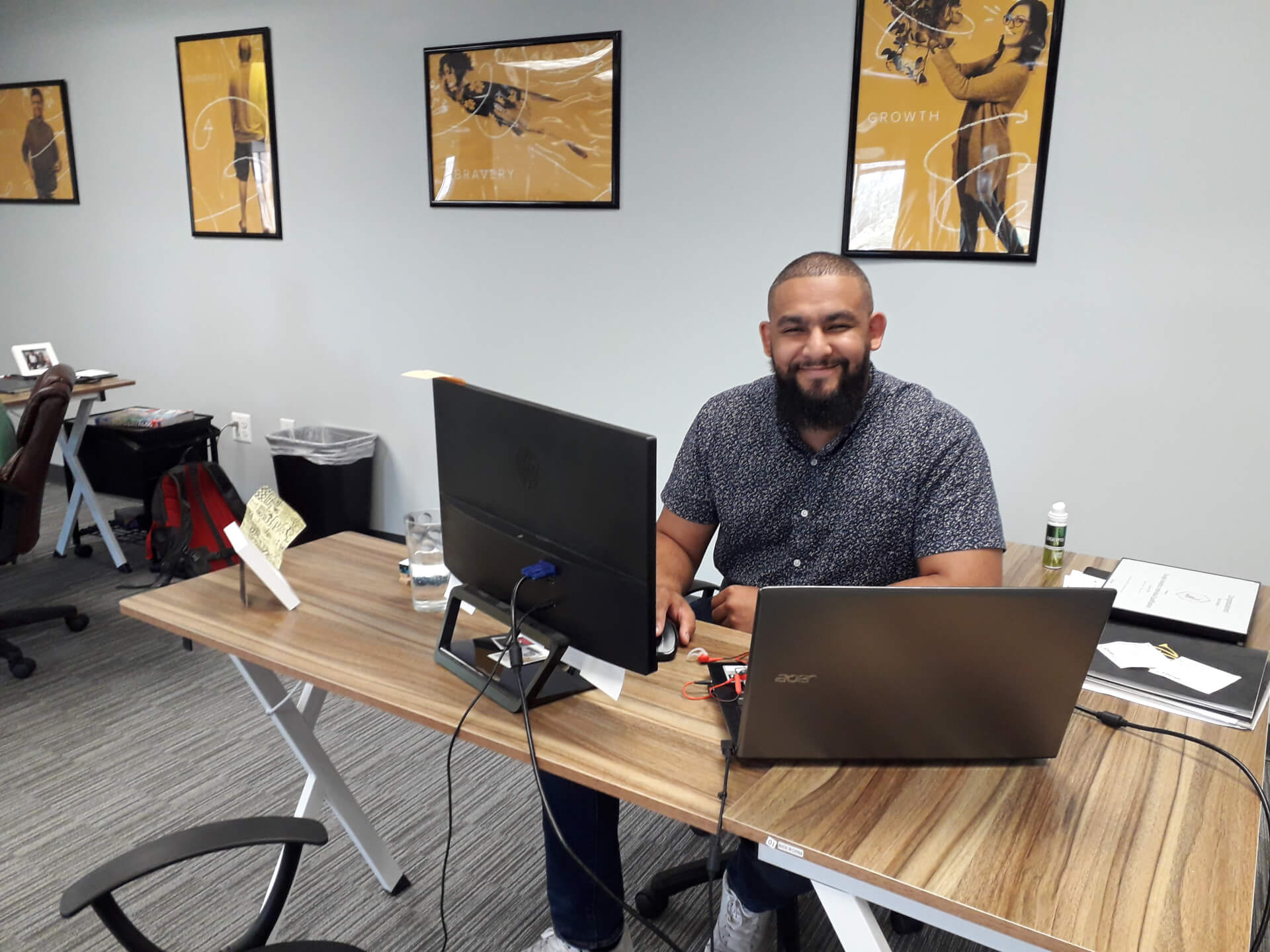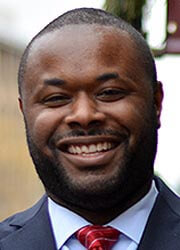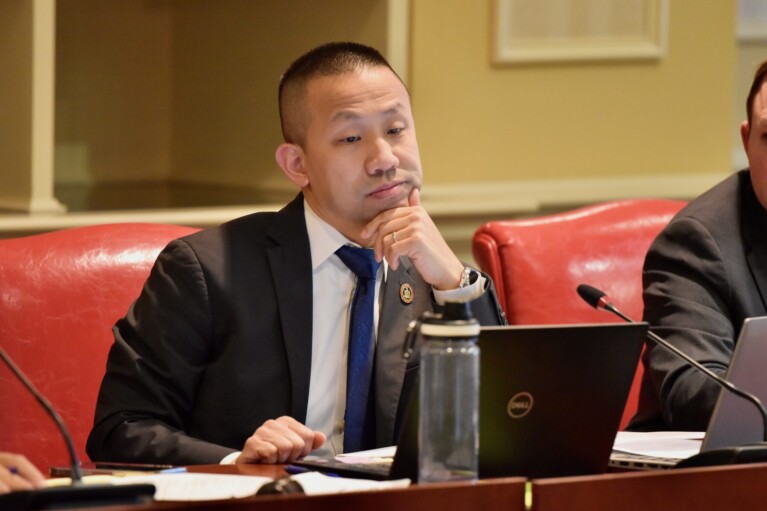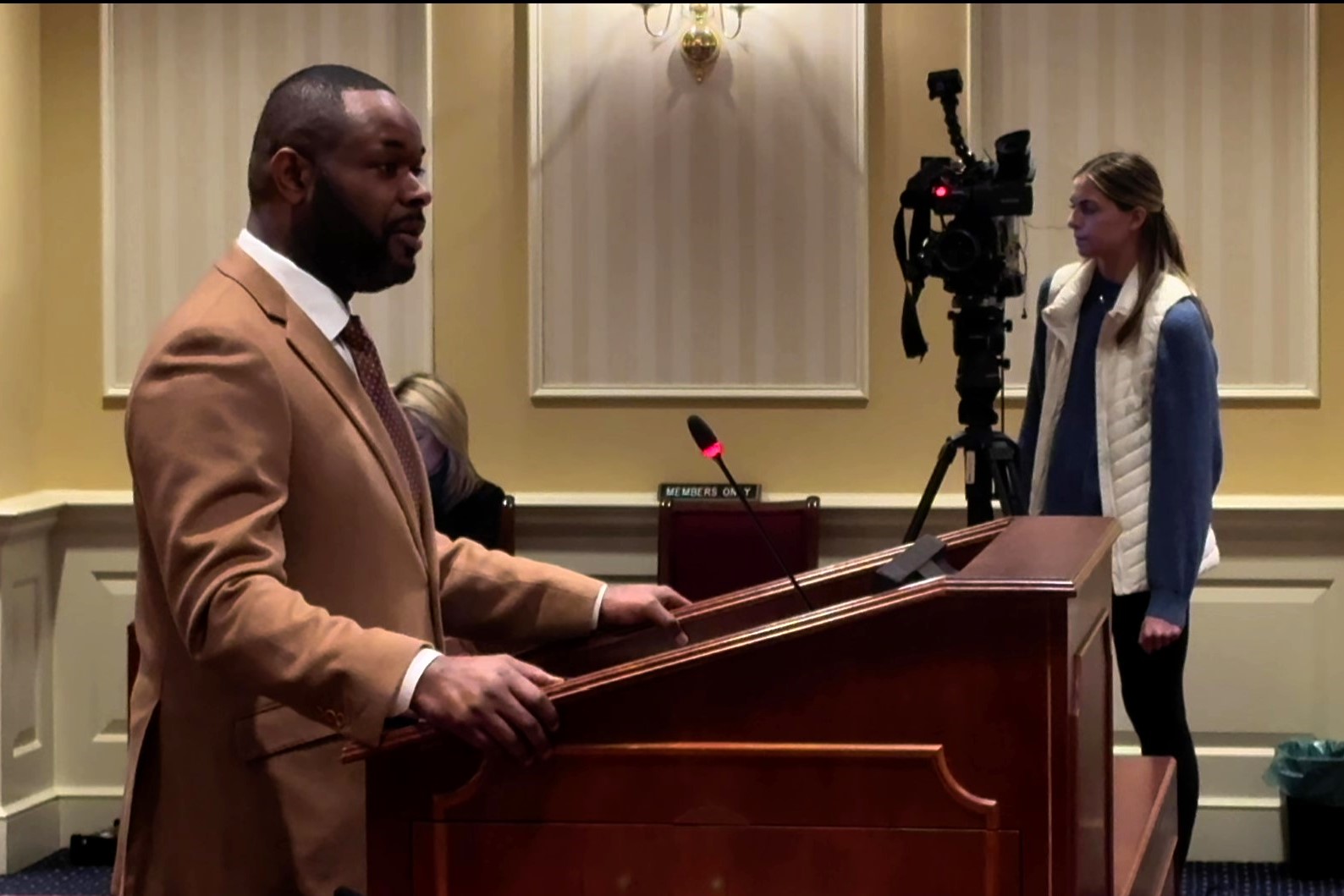
Six months after graduating from Towson University with a degree in public relations, Bilaal Daghar of Baltimore was bartending and looking for a more professional job. Then a friend told him about an apprenticeship program at a digital media firm that would pay him to learn the skills he needed to become a digital media specialist.
Soon, friends were asking Daghar, 26, why he chose to spend his Saturday mornings watching training videos instead of watching soccer with them, as he earned certifications in Google Analytics and Facebook Analytics while working full-time in the Maryland Registered Apprentice program at Zest Social Media Solutions in Towson.
The word “apprentice” conjures up images of age-old professions such as masonry or carpentry. But Maryland’s two apprenticeship programs are offering more than 10,000 teens and adults opportunities in 21st century fields like information technology, health care, cybersecurity, biotechnology and hospitality along with more traditional areas; meanwhile, the state government is expanding its teen program this year. Apprentices study under a mentor, work full-time for pay, and take classes at a local community college, on-site, or, in the spirit of the 21st century model, online.
“It’s a shift in the mindset of what an apprenticeship is,” said Christopher MacLarion, director of the Maryland Apprenticeship and Training Program for the Department of Labor, Licensing & Regulation. “It’s not just what your parents and grandparents looked at.”
This fall, the state will expand Apprenticeship Maryland, its youth apprentice program, from three counties to 12 counties plus Baltimore City, where school systems will let students earn high school credit for their apprenticeships. The Registered Apprentice program for adults operates statewide. Apprentices in both programs are paid for their work; the state’s slogan is “earn while you learn.”
A win-win situation
The state’s Registered Apprenticeship program aims to help employers stymied by labor shortages or unimpressed with the skills of some college graduates to find and train qualified employees, while offering workers 18 or older an alternative pathway to college. For the second year in a row, more than 10,000 adults are registered apprentices, MacLarion said.
Employers say the program offers a clear pathway for apprentices with each step clearly laid out, including required classes and scheduled pay raises. Registered apprentices complete up to 3,000 hours of job-related training while working full-time in a program of one to four years created by the employer and approved by the state.
Businesses can receive an income tax credit of $1,000 per eligible adult apprentice. They can be reimbursed by the state for up to 50 percent of the cost of apprentices’ education through the Maryland Business Works program and a $7 million federal grant to expand apprenticeships throughout the state. Apprentice wages may start at 50 percent to 80 percent of a journeyman’s, then rise as they gain skills.
Hands-on workplaces and classrooms can be as varied as a Towson digital media office that includes a ping pong table and conference room with walls covered in white boards; a Laurel office park with dozens of classrooms that include open-walled structures with electrical boxes and wires; community college classrooms; or a Frederick car repair shop.
Apprenticeship Maryland, the new youth program, was piloted in two counties in 2016. It grew out of the initial report by the so-called Kirwan Commission that called for alternative pathways to college, said Grant Shmelzer, executive director of Independent Electrical Contractors, Chesapeake and chair of the state’s Youth Apprenticeship Advisory Council.
Youth apprentices are juniors and seniors in high school who spend half a day in school and half a day at work, earning both credit toward their high school diplomas and pay for their work. Students complete 450 hours of training in the program, which lets the teen try out the job while the industry tries out the teen. More than 100 employers will participate.

Sen. Cory McCray (D-Baltimore City)
This fall, when Baltimore City joins the youth program, state Sen. Cory V. McCray (D-Baltimore) will take 40 Baltimore students on an “apprenticeship tour” modeled on the college tours that many high school students take. Students who are not planning to attend college will visit organizations of plumbers, electricians, and carpenters to learn about apprenticeship opportunities during the school day on Oct. 29, on a bus provided by The CollegeBound Foundation in Baltimore, McCray said. He hopes to expand on the pilot in the future.
McCray is a long-time booster of apprenticeships stemming from his own positive experience as an electrical apprentice decades ago.
Free education
Standing beneath a car in a repair bay at Dynamic Automotive in Frederick, Nathaniel “Nate” Fink, 21, set aside his blow torch to recount his story. Fink graduated from high school in 2016 and took classes at Frederick Community College, but soon floundered; his coursework felt irrelevant. He dropped out and found a job in the Quick Lube department at Dynamic Automotive. Soon, CEO and president Dwayne Myers recruited him into the company’s Registered Apprentice program, where Fink is now a repair technician working on his education with a new focus.
“Here it was all laid out for me – here’s the courses, here’s how to apply it to your real-world expertise,” said Fink, who lives in Frederick. What he’s learning from textbooks is directly relevant to the professional exams he’ll take for ASE certification, he said, adding, “The time in the classroom is invaluable.”
When he finishes the program, Fink will need only a few courses to complete his associate’s degree. He then plans to pursue his bachelor’s.
Dynamic Automotive was the first company in the state with both a youth and a registered apprentice program, said Myers, an Apprenticeship Ambassador for the state.
Myers got involved with the apprenticeship programs because he had trouble finding qualified help. The automotive industry was looked down upon, and parents wanted their children to go to college, he said. In fact, today’s cars can have 50 computers or more, and it takes expertise to diagnose trouble, he said.
Parents and students are attracted by the free education aspect of the program, which Myers highlights in red on postcards touting his apprenticeships. Dynamic Automotive pays registered apprentices’ tuition, books, and fees up front to its community college partners and is reimbursed by the state for 50 percent of the cost once students complete their classes. In return, apprentices must stay for one year after completion. Myers calculates it costs him about $1.50 per hour per employee to finance each employee’s education costs.
“College is for everyone – but at the right time,” said Myers. “Having a career path has brought in a millennial base. I’m growing and opening new stores because I am training the workforce I need. While other people have trouble finding help, we have a wait list.”
The mindset that everyone should go to college has led to students dropping out and having trouble finding careers that can sustain a family, said Shmelzer of IEC, which hosts one of the state’s largest programs, with about 800 registered apprentices.
While electricians have long followed an apprenticeship model, Shmelzer points to 21st century adaptations for his program. Apprentices work full-time during the day and go to school at night; a vast IEC classroom complex in Laurel, one of 10 training sites across the state and region, includes a solar array, wind turbine and electric car charging station for training apprentices about these emerging technologies.
There’s also an online program to accommodate apprentices who are working abroad for Maryland companies, such as an apprentice working in the U.S embassy in Germany, as well as single parents and those caring for elderly parents.
Not an internship
A registered apprenticeship is not the same as an internship, said Tim Bojanowski, president of Zest Social Media Solutions, who runs the Registered Apprenticeship Program for The Education Foundation of Baltimore County Public Schools.
“Internship is a muddied word,” he said. “Is it curriculum based? Volunteer? Paid? It creates a lot of gray area.”
Interns shadow and learn in a temporary position with little employer expectation of output, he said. Apprentices, on the other hand, have a more defined role working under a journey worker, learning on the job while actually doing the job in a full-time salaried position with the expectation they will contribute to the team.
Several employers said apprentices can be assigned significant work. Daghar, the digital media specialist, went from bartending and never having managed an account to managing a multimillion-dollar account, all while an apprentice, Bojanowski said.
Similarly, Hayk Karapetyan, 20, of Frederick, recently was promoted to assistant manager while in his second year in a three-year registered apprenticeship at Dynamic Automotive.
“I never expected to be a service writer or a manager at all,” said Karapetyan, adding he had dropped out of University of Maryland Baltimore County after just three months to do something he loved – working on cars. “Now I’m back in school learning something I’m passionate about.”
By training workers beginning their careers, Myers said he can continue to expand his business: “As we grow, we have the talent to put in our stores. We’re creating our workforce so we can meet the demand.”
Lisa Nevans Locke is a freelance writer who has covered education, local and federal government, and other issues in the region for more than 25 years. She has written for The Washington Times, Bethesda Magazine, Scholastic.com, The74million.org and the now-extinct Montgomery Journal, and she teaches writing at Montgomery College.
She can be reached at [email protected].



 Creative Commons Attribution
Creative Commons Attribution